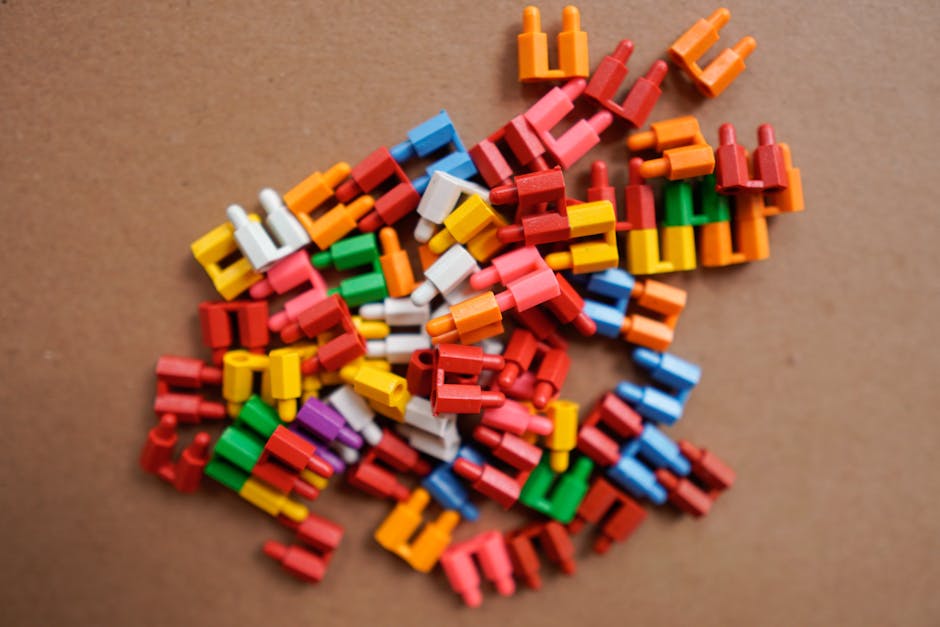Create a Web: Your Guide to Success
Table of Content.
- Why Create a Web?
- Planning Your Web Design
- Choosing the Right Tools
- Essential Web Design Elements
- Optimizing for SEO
- Testing and Launching Your Web
- Maintaining Your Web
Why Create a Web?
Creating a web is like setting up a digital home. Just like a house, it needs structure and design. But why do it? For businesses, a web can be a powerful tool. It helps them reach more people, show their products, and tell their story. Imagine a small bakery. With a web, they can share pictures of their cakes, list their menu, and even take orders online. This makes it easy for customers to find them and learn more.
For individuals, a web can be a way to share ideas or hobbies. Think about a photographer. They can create a web to showcase their best pictures. This can attract more clients. Plus, having a web makes it easy to share information. People can visit anytime and from anywhere. Creating a web is like opening a door to the world, allowing both businesses and individuals to connect and grow.
Planning Your Web Design
Creating a web starts with a solid plan. Begin by thinking about what your site will do. Is it for a business, a blog, or something else? Knowing your goal helps in deciding the layout and features.
Next, consider your audience. Who will visit your site? This affects the design and content. For example, a site for kids might use bright colors and simple words. A business site might need a professional look.
Think about the structure. Plan where each section will go. Use a simple sketch to map it out. This helps avoid confusion later. Pick the right colors and fonts to match your brand or message.
Finally, make a list of features you need. Will you have a contact form, a gallery, or a shop? Each choice impacts how users interact with your site.
Choosing the Right Tools
Picking the right tools to create a web can feel like finding a needle in a haystack. With so many options, it’s hard to know where to start. Let's break it down to make things simpler.
First, think about what you need. If you're new, tools like Wix or Squarespace are user-friendly and don't need any coding skills. They offer drag-and-drop features, which means you can just click and move items around your page.
For those who want more control, WordPress is a solid choice. It has many themes and plugins, letting you customize your site more deeply. You'll need a bit of patience to learn, but it’s worth the effort.
If you're building a web design for a company, consider Shopify for e-commerce. It comes with helpful tools to manage products and sales. Always check the support and community forums for each tool. They’re great places to find answers and tips from other users.
Essential Web Design Elements
Creating a web involves several key design elements that can make or break a site. These elements are not just about making a site look good; they also play a crucial role in functionality and user experience.
First up is layout. Think of layout as the backbone of your website. It organizes information and guides users through the content. A grid-based layout is common because it keeps everything neat and aligned. This helps users find what they need quickly, improving their experience.
Next is color. The colors you choose can affect how users feel about your site. Bright colors might grab attention, but using too many can overwhelm visitors. A balanced color scheme helps convey your brand's message and makes the site more pleasant to navigate.
Typography is another important element. It involves the choice of fonts, sizes, and spacing. Good typography ensures that text is easy to read and understand. Using different font sizes can highlight important information and create a visual hierarchy, guiding users to key points.
Images and graphics add life to a web page. They can make information more engaging and help illustrate points. High-quality images are essential because blurry or pixelated pictures can make a site seem unprofessional. Use images that support your content and enhance understanding.
Navigation is like a map that helps users move around your site. Clear menus and links make it easy for visitors to find what they’re looking for. A good navigation system improves user satisfaction and keeps them on your site longer.
Finally, consider mobile responsiveness. Many people browse the web on their phones, so your site must look good on smaller screens. Responsive design adjusts elements like layout and images, ensuring a seamless experience across devices.
Together, these elements create a web that is not only visually appealing but also user-friendly and effective.
Optimizing for SEO
Optimizing a website for search engines, or SEO, is crucial for getting noticed online. Let's break down what SEO means and how you can make your website shine in search results.
SEO stands for Search Engine Optimization. It's all about making your website easy for search engines like Google to find and understand. The better your SEO, the higher your site can appear in search results. This increases the chances of people visiting your site.
First, let's talk about keywords. Keywords are the words or phrases that people type into search engines. When creating your website, think about what words your target audience might use. For example, if you run a bakery, people might search for "fresh bread" or "best cakes." Use these keywords naturally in your content. Don't overuse them, or it might look like spam.
Next, consider your website's structure. A well-organized site is easier for search engines to navigate. This means having clear headings and subheadings, which guide users and search engines through your content. A simple, clean design helps too. Make sure each page has a title and a short description that tells what the page is about.
Content is another big part of SEO. Good content is valuable and interesting to your audience. It should answer questions or solve problems they might have. Regularly update your site with fresh content. This keeps people coming back and shows search engines that your site is active.
Links also play a role in SEO. There are two types: internal and external. Internal links connect different pages on your site. External links point to other websites. Both kinds of links help search engines understand what your site is about and can improve your ranking.
Images and videos can make your site more appealing, but they also affect SEO. Use descriptive file names and add "alt text" to images. This tells search engines what the images show, which can improve your visibility.
Lastly, speed matters. A fast-loading site gives a better user experience and ranks higher. Check your site's speed and fix any issues that slow it down.
SEO might seem complex, but taking it step by step can make a big difference. With the right keywords, a good structure, quality content, and attention to technical details, you can enhance your website's visibility and attract more visitors.
Testing and Launching Your Web
Testing your website before launching is like checking a car before a long trip. It ensures everything works smoothly and visitors have a great experience. Start by testing your website’s functionality. This means clicking on every button and link to see if they lead to the right pages. If you have forms, fill them out and submit to check if they send data correctly.
Next, look at the design on different devices. Your website should look good on a computer, tablet, and smartphone. This is called responsive design. You might need to adjust some elements to fit smaller screens. Try using tools online that show how your site appears on different devices. This helps catch any design problems early.
You should also test the website’s speed. People don’t like waiting for pages to load. Use tools that measure how fast your site loads. If it's slow, consider compressing images or reducing the amount of data your site uses. A fast website keeps visitors happy and engaged.
Don’t forget about browser compatibility. Your website might look different on Chrome, Firefox, or Safari. Open your website in multiple browsers and see if everything still works. Pay special attention to any missing images or broken layouts.
Finally, check your website’s security. Make sure data is protected, especially if you collect personal information. Look into using HTTPS for a secure connection. This builds trust with visitors and keeps their data safe. Once these steps are complete, your website is ready to launch.
Launching is exciting but requires planning. Choose a quiet time when fewer people are online, like late at night. Announce the launch on social media or through an email to let people know. This way, your website starts its journey on a positive note, ready to welcome visitors.
Maintaining Your Web
Once your web is live, keeping it in top shape is crucial. Regular maintenance ensures your site runs smoothly and continues to attract visitors. Imagine your website like a car—it needs routine check-ups to perform well.
Begin with content updates. Fresh and relevant information keeps users engaged and helps with search engine rankings. For example, update your blog with the latest company news or industry trends. This not only shows that your business is active but also provides value to your audience.
Security checks are vital. Cyber threats are everywhere, and a breach can damage your reputation. Use strong passwords and update them regularly. Installing security plugins or software adds another layer of protection. Think of it as adding an alarm system to your home.
Don't forget about performance optimization. Slow loading times can drive users away. Use tools to check your site's speed and identify areas for improvement. Compress images and remove unnecessary plugins to make your site faster. It's like decluttering your workspace for better productivity.
Another important task is to monitor site analytics. Analyzing data helps you understand visitor behavior and preferences. Use this information to improve user experience. For instance, if a particular page has high bounce rates, consider redesigning it for better engagement.
Backups are your safety net. Regularly back up your website to protect against data loss. Imagine it like saving important documents in a secure place. If something goes wrong, you can easily restore your site to its previous state.
Check for broken links. They not only frustrate users but also harm your SEO. Use tools to identify and fix them. Think of it as repairing a leaky faucet before it becomes a bigger problem.
Lastly, test your website on different devices and browsers. Ensure it looks and functions well everywhere. This makes your site accessible to a wider audience. It's like making sure your store is easy to navigate, no matter who's visiting.
By maintaining your web, you keep it running smoothly and effectively. This builds trust with your audience and supports your business goals.
FAQ
Why is having a web presence important for individuals and businesses?
Having a web presence is crucial as it enhances visibility, credibility, and accessibility. For businesses, it can lead to increased customer engagement and sales, while individuals can use it to showcase their work or personal brand, reaching a wider audience.
What are the first steps in planning web design?
Start by defining your target audience and setting clear goals for your web. Consider the user experience and how you want visitors to interact with your content. Creating a sitemap and wireframes can help in visualizing the layout and structure.
What tools should I consider when creating a web?
Depending on your skill level and needs, you can choose from website builders like Wix or Squarespace for simplicity, or more customizable platforms like WordPress. For coding, HTML, CSS, and JavaScript are essential, with frameworks like React or Bootstrap offering advanced features.
What are the key elements of effective web design?
Effective web design includes a clean and intuitive layout, a cohesive color scheme, and readable typography. Prioritize mobile responsiveness and ensure that the navigation is easy to use. These elements work together to enhance user experience and engagement.
How do I optimize my web for SEO?
Use relevant keywords in your content, titles, and meta descriptions. Ensure your web is mobile-friendly and has fast loading times. Creating quality content and obtaining backlinks from reputable sites can also improve your search engine rankings.
What should I check before launching my web?
Before launching, test your web's functionality across different devices and browsers. Check for broken links, ensure forms are working, and verify that all content is accurate. User testing can provide feedback on the overall experience and highlight areas for improvement.
How important is it to maintain my web after launch?
Maintaining your web is vital to keep it secure, up-to-date, and relevant. Regular updates, monitoring for issues, and engaging with visitors through fresh content and social media can keep your web active and appealing, fostering ongoing user interaction.


